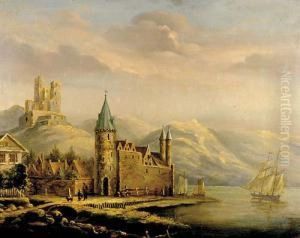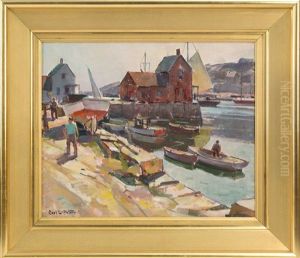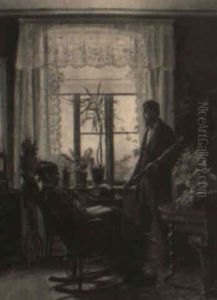Carl C. Peters Paintings
Carl C. Peters was an American painter, born in 1897 in Rochester, New York. He was known for his regionalist style of painting, which was popular in the United States during the 1930s. Peters studied at the Mechanics Institute in Rochester, now known as the Rochester Institute of Technology, and he furthered his education at the Art Students League in New York City. He was influenced by the works of the Ashcan School and the narrative style of Thomas Hart Benton, another prominent regionalist painter of the time.
Peters was deeply connected to the landscapes and the people of his native state, New York. His works often depicted scenes of everyday life, rural landscapes, and the working class. He strove to capture the spirit and culture of America through his art, which was a significant theme for regionalist artists. During the 1930s and 1940s, Peters completed several murals under the sponsorship of the Works Progress Administration (WPA), a New Deal program established to provide public works jobs for the unemployed during the Great Depression.
Despite being well-regarded for his murals and easel paintings, Carl C. Peters did not achieve the same level of fame as some of his contemporaries, such as Grant Wood or John Steuart Curry. Nevertheless, his artistic contributions provide a valuable insight into the American scene painting movement of the early 20th century. His works are held in various public and private collections and continue to be appreciated for their historical value and artistic merit.
Peters continued to paint throughout his lifetime, capturing the evolving American landscape and its inhabitants. He passed away in 1980, leaving behind a legacy that reflects a dynamic and changing period in American art history. His work remains an important part of the conversation about American identity and the role of art in society.


